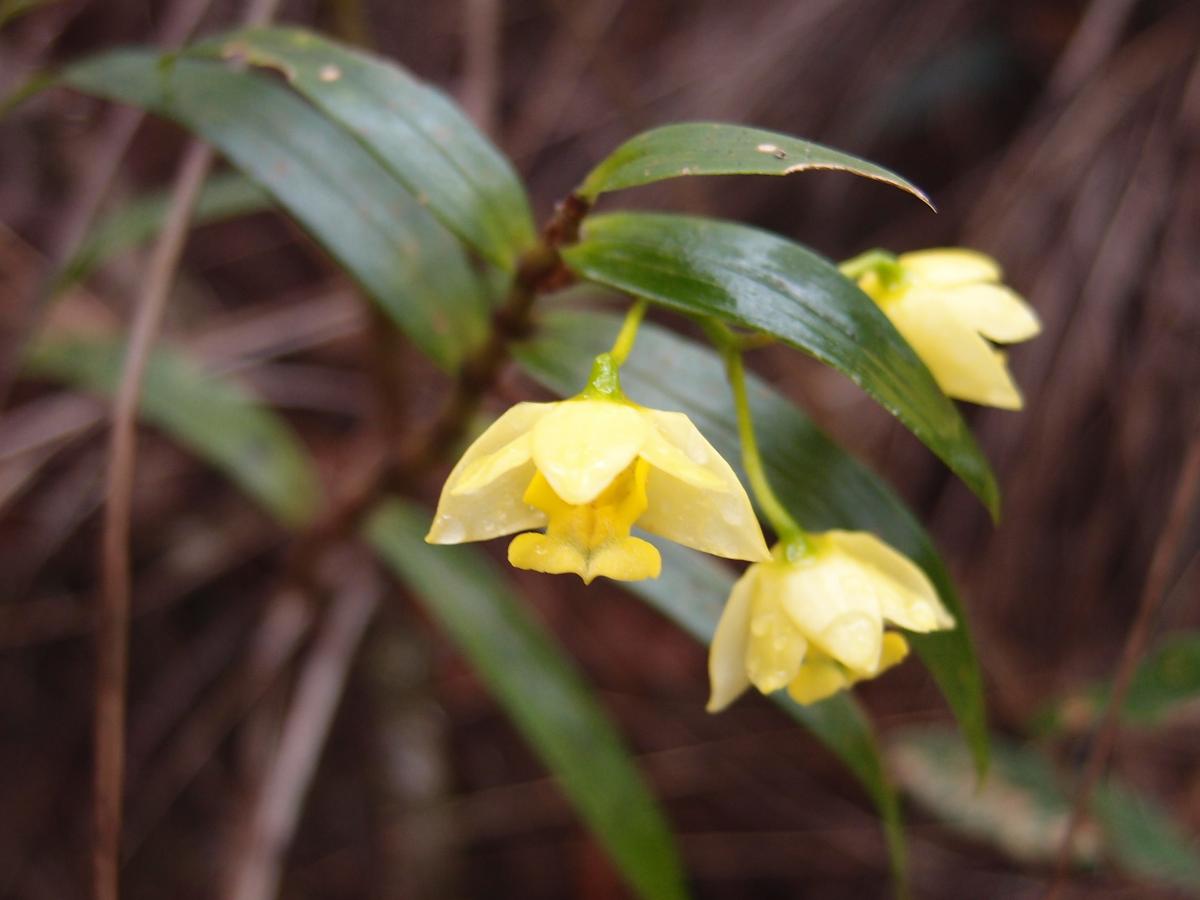by Jamie Oliver
Orchids are the most diverse of all the flowering plant families with around 25,000 species world-wide and around 1,600 in Australia. They can be terrestrial or grow on rocks (lithophytic), or on other plants such as trees (epiphytic), or on rotten logs. While some have large, showy flowers, many can be small, inconspicuous plants with tiny delicate flowers of various hues.
While there are several orchids that can be found around the Paluma village and surrounding tracks, their scientific names are currently in a state of flux, with 4 of the ‘5 easy species’ listed here having had their names changed by one group of scientists, but contested by another! Here we will use the names published by the Atlas of Living Australia, but if you use the very good online key to Tropical Rainforest Orchids, you will need to be aware of the alternative scientific name given after the “=” sign).
Remember that it is illegal to collect any orchids from the wild. Several species have suffered from serious decline due to unscrupulous collectors.
1. Christmas Orchid (Calanthe australasica)
This is one of the most common and easily recognized species around Paluma. It is a terrestrial orchid with large pleated leaves. As its name suggests, it flowers around Christmas time (October – February) with a rather showy mass of white flowers on one or more stems. Under the shady canopy of the closed rainforest these orchid plants occur at irregular intervals, but in more open areas on the edge of the forest they can spread to form substantial patches. There are good examples of this orchid along all the village tracks.


2. Slender Cane Orchid (Dendrobium adae = Thelychiton adae)

This is the most common of the epiphytic orchids that can be seen on the upper trunks and limbs of trees along the village tracks. You can also find it at ground level on the limbs of recently fallen trees or on large rock outcrops. It can be identified from the cluster of distinctive pencil-thin, often grooved canes with a few (max. 6) leaves near the tip. It can also be found on rocks. The white to pale yellow flowers are small (around the size of a 5 or 10 cent coin) and appear from July to October. There are several good examples of this orchid along the H-Track and in several open areas around the village. This species is restricted to high altitude rainforests and sheltered areas of wet forests from above 700 m from Paluma to the Tablelands.


3. Rock Orchid (Dendrobium speciosum = Thelychiton jonesii var. bancroftianum)
This is a well-known and widely distributed lithophytic and epiphytic orchid with large bulbous stems (pseudobulbs) topped by large leathery leaves. It is common in many Paluma gardens where it can form massive clumps. Large clumps of this orchid can be found on rocky outcrops in full sun along tracks around the Paluma Dam (Lake Paluma), but along tracks around Paluma village it forms smaller, less conspicuous clusters, usually high up on trees. Flowers mostly vary from white to creamy yellow and appear from September to November.


There is another species recorded from this area which looks nearly identical (Dendrobium jonesii = Thelychiton jonesii var. jonesii) and can only be distinguished by its slightly smaller flowers and earlier flowering period (September-November). Some taxonomists have lumped both into a single species, so it might be safer to call any of these orchids Dendrobium speciosum/jonesii and leave the final determination to be resolved by the experts!


4. Cupped Strand Orchid (Bulbophyllum newportii = Adelopetalum newportii)

This native north Queensland orchid is quite common but often overlooked due to its small size. It has a creeping rhizome that grows up trees or rocks and produces regularly-spaced, small, globular, green pseudobulbs (8-15 mm), each with a small, sturdy, green leaf up to 70mm. It produces bunches of up to 8 small (50mm), white to cream or greenish flowers from September to December.
In areas at the edge of clearings or on fallen trees it can be found near the ground but otherwise it is higher up in the forest canopy where the light is stronger. It can be found around many of the public areas in the village.
.jpg?bwg=1590822431)

5. Buttercup Orchid (Dendrobium agrostophylla = Trachyrhizum agrostophylla)
This beautiful small epiphytic or lithophytic orchid can be found in open forest near the edges of rainforest or on tree branches overhanging open sunlit streams. In favourable conditions it can form dense patches.

It has slender cane-like stems that look a bit like Dendrobium adae (see above) but they are more spaced out along a creeping rhizome rather than occurring in bunches. It also produces leaves along a greater portion of the stem. The perfumed flowers are bright yellow, appearing from July to November.
